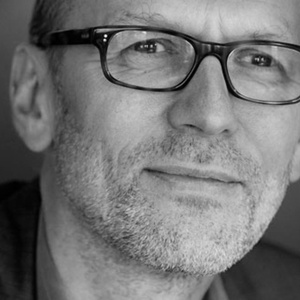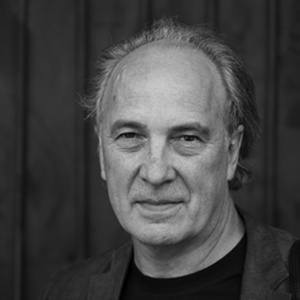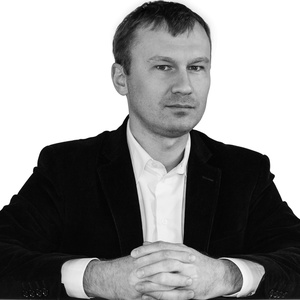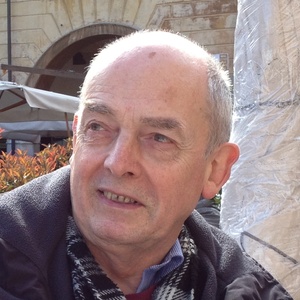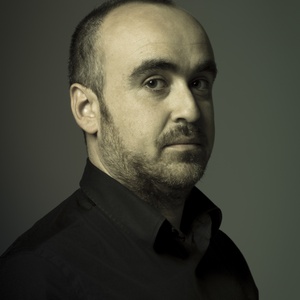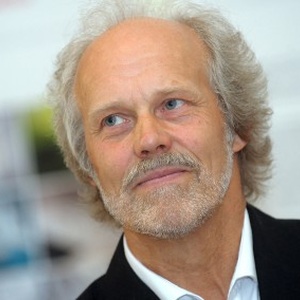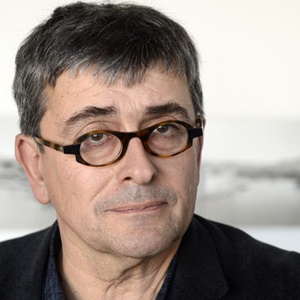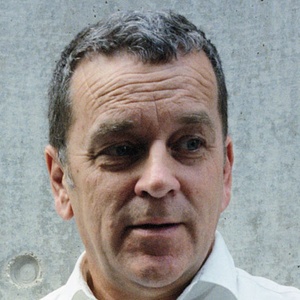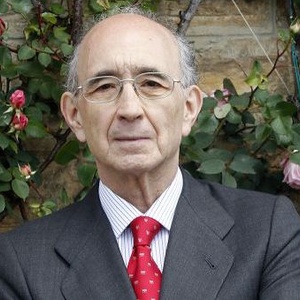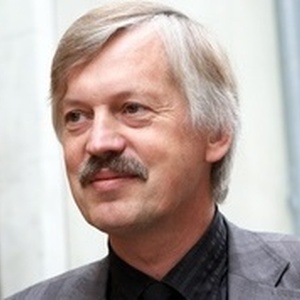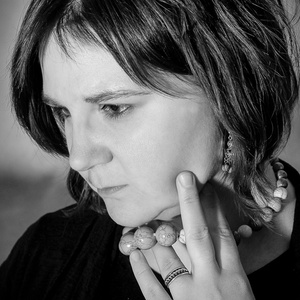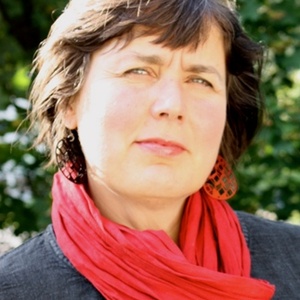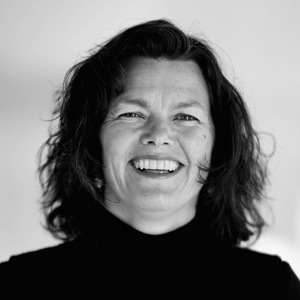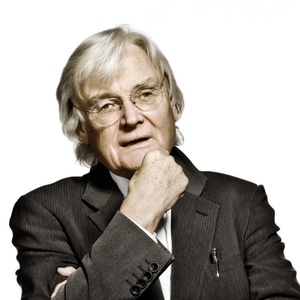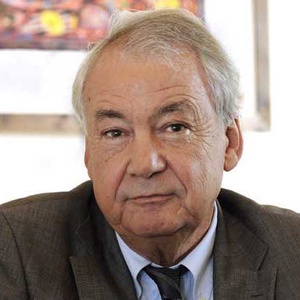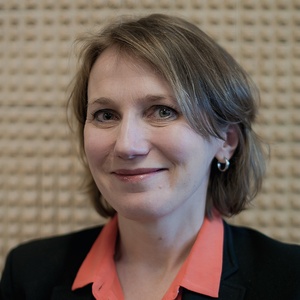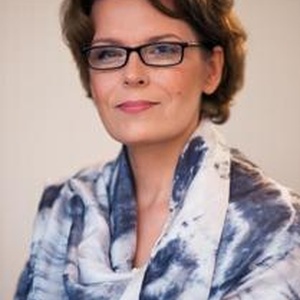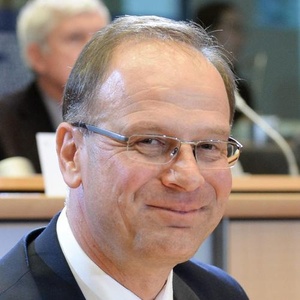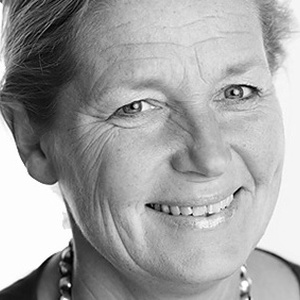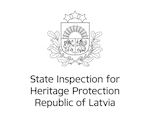Adriana Raus
Romanian Union of Architects
The european heritage is a connection between a lot of particular experiences of different countries and as a strategic resource for a sustainable Europe must keep its diversity. Contemporary architecture without this background will lose a lot of values.
Agnese Lāce
Architect
The accessibility to the heritage objects and giving possibly a new function according to nowadays actualities to my mind is of great importance in possibilities for the heritage objects to continue it's life cycle. This goal could be reached by means of expressions of contemporary architecture and design in collaboration with innovative and thoughtful planning.
Reasonable dose of brave decisions and respect, their balance in reconstruction. For example - reconstructions of churches for other functions (theater, restaurant, etc.) in European cities (added example pictures - Compagnietheater in Amsterdam).
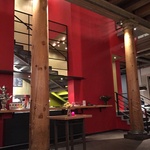
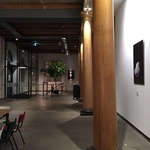
Agris Lērums
Architect
DIFFERENT APPROACHES TO COMBINING HISTORICAL AND CONTEMPORARY ARCHITECTURE ARE TO A LARGE EXTENT RELATED TO THE DEGREE OF PRESERVATION OF THE SITE AND THE INTENDED TYPE OF USE, AND IN ANY CASE IT IS IMPORTANT TO ENSURE CONSTRUCTION SAFETY
Airiin Lehtmets
Estonian Ministry of Culture
Contemporary architecture and design can have an invaluable impact on the metamorphosis of post-industrial landscapes into comprehensive public spaces as well as the preservation and valorisation of industrial heritage.
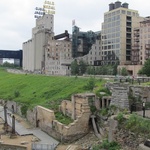
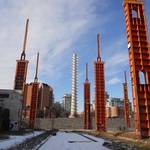
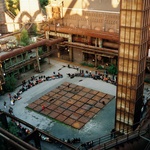
Alexandra Warr
English Heritage
For England, English Heritage leads the sector in a positive, well-informed and collaborative approach to conservation that we call 'Constructive Conservation'. The aim is to recognise and reinforce the historic significance of places, while accommodating the changes necessary to make sure that people can continue to use and enjoy them. The best way to save a building is to find a new use for it. Even recently restored buildings that are vacant will soon start to degenerate again. Modern conservation involves having a more thorough understanding of what makes a site important and working collaboratively with owners and developers to find that new use. As part of our constructive approach we work collaboratively with architects and developers at early pre-application stages to help them to make decisions based on a full understanding of their site. For some examples: http://www.english-heritage.org.uk/professional/advice/conservation-principles/constructive-conservation/constructive-conservation-in-practice/
Algimantas Degutis
Department or Cultural Heritage Lithuania
Contemporary architekture in the protected site ori n CH object can not destroy or have negatyve impacton CH objects or sites authenticity. In Lithuania the most important authentic parts and features are legalized by so called valuable characteristics. In a site valuable views (panoramas) are defined, also street building fasades, silhouettes, perspectives from certain places. In one of central streets in Kaunas protected modern city in a building built before Wold War I which is the site valuable characteristics two stores were added destroying the building authenticity as well as the street building fasades authenticity. The Court confirms that public interest for costs of destruction and damage compensation is more important than public interest in protection of cultural value. Court process is not finished. Photo 1 included. The same investor restored the ampyre style building (1913) and built a new one next to it harmonious to the surroundings. Next to it there is another Soviet period building.
Andrea Rumpf
Luxembourg Center for Architecture
Finally the interaction between contemporary architecture, design and heritage becomes subject of debates on a political level. There is no sustainable future for the build heritage of Europe's past if we don't engage here and now in promoting the creation of Europe's future heritage. To quote Johan Huizinga: "If we are to preserve culture, we must continue to create it." Bravo Riga!
Andrius Laurinaitis
Architect
The dialogue and discussion itself between the professionals and conscious people sometimes is the important catalyst for efficient problem solving. These days finding common ground for past//future design and architecture has no easy way out. I find the estonian architectural mentality as an example for everyone here in the Baltics.
Angela Kovacs
Romanian Order of Architects
Heritage in relationship with contemporary architecture is an important matter in today’s climate of rapid change because of the very delicate balance between the two. The city of Targu Mures where I am based is an example of this issue – it's centre is made up of predominantly Sezession-era buildings and there is a constant struggle to keep harmony between history and modernity in a country where people favour new prosperity instead of legacy.
Anita Blom
Specialist History of Urban Development
Knowledge of the past is necessary to give meaning to the urban design of today. Although not yet everybody is convinced of the value of post war architecture and urban development, it is surely worth to preserve. Also because of the international dimension.
Artūras Blotnys
Vilnius municipal administration
We have a major urban challenge that needs regular careful attention and coherent solutions: to be fairly professional and bravely responsible accepting contemporary architecture infills in historic urban contexts. And this task is even more complex when it comes to conversion or regeneration of abandoned urban sites. To avoid inertia and imitation we need to remember the Riga charter.
Artūras Sakalauskas
Ministry of Culture of Lithuania
The value of historical settings could be expressed as urban identity; New structures in historical settings should be recognizable - how could be found the most suitable strength of contrast?; The role of the 4th dimension - time, when planning new buildings in historical environment - what other meanings could be raised up except as a sign of nowadays? Who should be cared of cultural heritage? people and function are the part of the process - if there is no community (from generation to generation) - there is no protection - the beginning of globalisation?



Brigita Bula
Architect
A lot of free neglected heritage real estate. A lot of private, public, office space needed. Cities expanding, creating infractructural and social problems. To solve that all by overstepping perceptions of what is needed versus what is really needed (spacewise - big space, small space, open space; comfortwise - ventilation, insulation etc).
Carolin Pihlap
National Heritage Board of Estonia
Contemporary architecture is more or less the same everywhere. It is the heritage, the historic architecture that gives a place its uniqueness, makes it recognizable. Only exceptional contemporary architecture can do the same. Combining exceptional modern architecture with well preserved and valued built heritage in a respectful manner gives a unique and rich environment that is both desirable to live in and attracts people from afar to visit.
Claudia Schwalfenberg
Verantwortliche BaukulturSwitzerland
Contemporary building culture grows from the exchange with the existing built environment. But new ideas, materials and technologies are also important drivers for the building culture of tomorrow.
Dace Ķibilda
heritage inspector
Integration of new buildings in the cultural landscape of an old town – is construction of replicas of lost historical buildings justifiable for the purpose of restoring the overall historical image? Use of traditional and modern building materials, integration of modern architecture into the environment of an old town or rural heritage landscape?
Dace Ziemele
Culture sector
Culture and cultural heritage is a significant resource for the development of high-quality life and work environment in cities and rural territories.
Dagnija Baltiņa
Latvian National Commission for UNESCO
The notion of heritage has become a very complex one over the last years. It does not juxtapose contemporary architecture and design. In contrary - it intertwines and inspires the contemporary!
Diāna Potapova
Student
Assistance with the design, it is possible to improve cultural heritage and it's user interaction. Design solutions must be well thought out and focus on the user. If so, then the user will interact with the environment, after the designer planned scenario.
Dr. Frederick O'Dwyer
Senior Architectural Advisor
The Venice Charter's concept of authenticity in purely material terms has caused much confusion over the past fifty years and has led to debate as to whether interventions in the conservation of historic buildings really ought to be contrastive in style and materials or both. A strict interpretation of its articles, implying that any other methods of conservation are wrong, does not accord with the more traditional approaches still in widespread use in Europe and beyond.
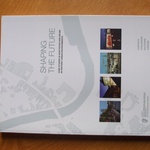

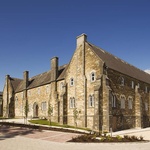
Dr. Rūta Kaminska
Mākslas vēsturniece
From the perspective of an art historian, each historical epoch can add significant values to architectural and design space. Professionalism is key to achieving a successful result. This is evidenced by a sensitive understanding of the historical space and an ability to integrate one's creative idea into the overall context taking into account the already existing values created by one's predecessors instead of aggressively denying it. The challenge of working in a space dominated by historical traditions always is interesting, but it also sets high requirements. The conference offers an analysis of the interrelations of historical context and new creation, which can become a significant stimulus for creating new, high-quality values also in Latvia.
Dzintra Purviņa
Ministry of Culture
I propose to use the conclusions of the conference that will be adopted in the European Commission report, and present and discuss them also in the Latvian Design Council and the National Architecture Council, and also present them to the members of the Creative Industries Council. It would definitely be useful to get an understanding of how the conclusions correlate with the key principles and particular lines of action of the Latvian Architecture Strategy and the Latvian Design Strategy.
Edgars Bērziņš
Latvian Association of Spatial Planners
Sustainable development is balanced development that requires not only legal but also economic and financial instruments, and the time has come to agree on this so that heritage gets wider opportunities for integrated development.
Eva Majchráková
Ministry of Culture of the Slovak Republic
One of the institutions of the division of the cultural heritage is the Centre for Folk Art Production. The Center promotes crafts courses for adults and young people in the form of lifestyle. Working with crafts enables participants to learn about cultural traditions of their ethnic group, and thus gain a deeper knowledge of natural materials, manual technology productions and last but not least, they learn about themselves. Centre for Folk Arts production organizes an international competition "Rings in Water" as a project from the European Federation of Folk Arts and Crafts. Over the years the results have shown remarkable opportunities to evaluate traditional craftsmanship in combination with contemporary design, exposing great potential for creativity among young up-and coming designers. Regarding the accessibility of culture, the Ministry of culture of the Slovak Republic takes into account the necessity of inclusive cultural heritage, including tangible, intangible and digital cultural heritage. Through its grant scheme it supports many easily accessible projects of cultural heritage for disadvantaged groups of people. Last but not least, we should not forget about the relation between cultural heritage and human rights. The States is responsible for the implementation of the international conventions, which has always emphasized human rights in relation to cultural heritage.
Evija Dansone
Architect
The topic of the conference is interesting because in my everyday work I reconstruct historical buildings and continuously look for a compromise between the requirements of the Inspection for Heritage Protection, mission awareness, the client's wishes and the budget of the project. I think that owners have zero incentive to preserve and restore, because most often such projects do not pay off, and it is much cheaper to build from scratch. Besides, in the public environment there is not enough information educating owners of such buildings about their value, and neither there is any real legal protection or financial support. I hope to find arguments for future discussions.
Gediminas Rutkauskas
Vilnius Old Town Renewal Agency
Sound continuity is necessary to achieve cohesion of urban and architectural environment. The lost or undeveloped urban elements in protected areas needs to be grown especially carefully. To ensure harmony of urban evolution tolerance and dialogue with natural and historic urban environment is essential. Creation interplay and common language between historic and contemporary is more important than aesthetical impression, technical solution or dominance of the new. Lets follow carefully by cognizing former local specificity and traditions, unusualities and invations. The wisdom here is that the future is hidden in the past.
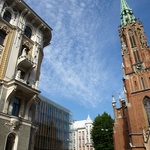
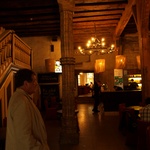
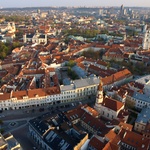
Giuliana De Francesco
Ministero dei beni e delle attività culturali e del turismo
Contemporary architecture becomes later heritage - Quality contemporary architecture can play an important role in the rehabilitation of suburbs.
Gvido Princis
Riga City architect
New (or reconstructed) buildings that are built in the area of medieval architectural ensembles of historical cities (including Old Riga) must not be developed as urban development accents of these structures, because heritage – unique architectural monuments – holds the exclusive privilege of being the main accent; instead of an increase of the share of dominant buildings of vastly different taste and quality of professional execution. New buildings in historical building ensembles should be given a supporting or background architecture role, which should harmonically represent and make accessible the historical buildings – their structure (landscape, silhouette), construction materials of historical buildings (wood, brick), and also the proportions of architectural shapes (the golden ratio). Only this attitude towards heritage can ensure that, for example, Old Riga remains what it is in substance and not only by the name. I believe that the unique architectural heritage evidence and values created by our ancestors should not only be preserved, but also masterfully developed (renovated) for future generations. This in turn offers an opportunity to return to a professional discussion on rebuilding authentic buildings in parts of old towns (including Old Riga) which were destroyed during wartime, because from the perspective of preservation of heritage such a development strategy of old towns will have the lowest potential negative impact on the deformation of the authentic urban development ensemble in the long run.
Ilmārs Dirveiks
Architect
Topical discussion – the issue of accessibility of heritage, namely, a balanced approach, so that the physical aspect does not dominate over the informational aspect. Modern design and architecture is not a threat to heritage. The threat is presented by an unskilled creator of contemporary architecture and design.
Ilze Zariņa
Kuldīga Restoration centre
In our everyday work we ask questions about disapearing historical buildings and following disapearing ancient crafts and disapearing ancient tools that are necessary to implement restoration works.
Would there be reason to establish reserved state protected areas with strong rules paralell to existing state protected monument areas? Should these areas be considered as alive museums? There were established state protected nature areas already since Soviet period, may be it is good experience to consider.
Ingeborg Hoffstadt
Standing Conference of the Ministers of Education and Cultural Affairs of the Länder in the Federal Republic of Germany
The quality of interaction between cultural heritage, contemporary architecture and design is crucial, because the junction between the past and the future meets at this point. These are factors that form culture and culture characterises a society and thus the modes of life. The dialogue between these pillars is necessary and there are already some good examples available, e.g. the German Federal Foundation for the Culture of Building (Bundesstiftung Baukultur/ www.bundesstiftung-baukultur.de) promotes the discussion about the built environment, which is the stage for our daily life. Moreover, different initiatives exist on state level in Germany, e.g. in Rhineland-Palatinate "Initiative Building Culture" (since 2003/www.baukultur.rlp.de). One of the objectives is to inform the public about high quality building, to support good practice or to award prices to remarkable modern architecture in historical environment.
Inta Mangulsone
Cultural heritage inspector
One of the architectural monuments preservation methods - functional customization , allowing their development and presenting contemporary intervention historical substance with modern shapes , materials and advanced construction technology .



Jana Jākobsone
Student of arts
For the past years Riga has been growing, we see not only renovations of historic buildings or constructions of new ones, but also a fusion of both. For example, in the Historic Center of Riga, which is part of UNESCO World Heritage list, there is more and more contemporary architecture among the historical buildings. As an art history student, I would be interested to hear from the professionals the ideas, concepts of this coexistence and the possible effects or benefits for the heritage from the contemporary architecture.
Jānis Kalnačs
professor at Vidzeme University College
1. Of course there is a shortage of funding in Latvia.
2. Not always it is possible to find appropriate use for heritage buildings after they are renovated/restored, even if EU structural funds are used. This means that the site is used for a purpose that differs from the original one, and the proposed type of use either seems too elitist to many people or, the very opposite, something primitive is offered in an attempt to attract more visitors. The number of visitors is influenced by the decrease in population of Latvia, cultural values of consumers, and also by the need to compete with the diverse choice offered by neighbours, as well as competition on a wider European and global level.
3. The decrease of rural population presents a serious problem to churches in rural areas. Congregations with a decreasing number of parishioners will be unable to maintain their churches. It will be necessary to come up with an idea how to use the church in cases when the congregation is unable to maintain it. This may also include expanding or changing the functions or churches
Levente Polyak
Hungarian Contemporary Architecture Centre
The reuse of vacant heritage sites can give new energies and new functions to the city.
Linda Leitāne-Šmīdberga
Architect
Architecture competitions are strategic instruments to generate new architectural ideas, solve problems in urban development and define future development. Architecture competitions promote the discovery of new talents. One key element in this process is architecture policy. Documents governing competitions are closely connected to spatial development planning practice and existing construction regulations. It should be noted that currently the documents that govern competitions in Latvia (Rules of Good Practice of the Latvian Association of Architects, the effective Law on Preservation and Protection of the Historic Centre of Riga etc.) do not lay down the lapsing period of results of a competition. A change in the commissioner of the architecture object, economic situation of the country (shortage of funds, political decisions etc.) do not put an obligation to implement the competition object and continue cooperation with the architect of the competition object. In the Latvian architecture urban development theory competitions are not seen as informal planning development instruments. In Latvia, competitions are more like a formal instrument for creating individual architectural objects. The political and economic situation of the past few decades has resulted in institutionalisation of competitions. Competitions have become a technical and professional habit. It should be also noted that the public is not actively involved in architecture competitions. What we don't have is explanatory, analytical criticism of the role of architecture competitions and the need for them in creating urban space development scenarios. As long as this trend continues the pubic and industry professionals do not realise and understand what kind of urban environment is being planned.
Madara Apsolone
Ministry of Culture
Daniel Libeskind has said that providing meaningful architecture is not to parody history but to articulate it. Contemporary architecture and design can provide new meanings for the rich European cultural heritage – an increasingly rare and appreciated treasure in the fast growing and globalizing world.
Marianne Lehtimäki
Monitoring Group on cultural heritage in the Baltic Sea States
Sustainable transformation and management of use and changes they require are central. Ways of interpretations as means for enriching experiences and quality of environment.
Mārtiņš Jaunromāns
Architect
There are best examples and fine quality patina left us from past, but mistakes, misunderstandings and faults are mostly demolished or rebuilt. This must be considered when we compare heritage with contemporary architecture.
Norbert Gatt
Restoration directorate of Malta
Historic buildings and contemporary design can and should co-exist, and decision makers and permitting institutions should facilitate and not stifle such interaction.
Peter Miladinov
Ministry of Culture Bulgaria
In the last years, the European Union recognizes that the cultural heritage is not only essential drivers of cultural and linguistic diversity in Europe, but also dynamic sector that have a significant contribution in its social and economic development. Nevertheless, it is equally true that these sector are facing today major challenges impeding their full development. One of the possible ways for the recognition of this new role is the mainstreaming of the cultural policy in the other sector policies at national and European level. For this mainstreaming to be successful, it is necessary that cultural heritage must be acknowledged as a basic element of the integrated strategies for development, which must be based on partnership between the authorities at all levels of governance, the cultural organizations, the business, the civil society. On the other hand, It is therefore necessary to demonstrate that cultural heritage is resource that could significantly contribute to the achievement of the own goals of the other sectoral policies. This is one of the possible ways for the affirmation and direct recognition of cultural heritage's potentials for implementing the Europe 2020 strategy for smart, sustainable and inclusive growth.
Pēteris Bajārs
Architect
Although it is stated that architecture should represent the time of construction, in everyday practice we are slowed by authorities which cannot accept any changes to historical monuments. The contradictions between words and actual works is the topic I am interested the most.
Petra Havu
Ministry of Education and Culture Finland
Exploring the marriage between heritage and contemporary -> ensuring and creating high-class built environment.
Raymond Farrugia
Ministry for Transport and Infrastructure Malta
Contemporary architectural interventions in heritage sensitive areas always generate heated debate in our local media. One of the most talked about projects in Malta , for the past number of years, was Renzo Piano's proposal for the regeneration of the main entrance to our walled capital city, Valletta. The project, now nearing completion still generates mixed sentiments and arguments among the Island's populace.
Reinis Ignatavičs
Project manager
We believe that we can find balanced road between sustainable business development and culture heritage conservation.
Rihards Pētersons
Expert in communication
It's time not only to discuss, but to act, to protect heritage from invasive architects, representing the so called "investors".
Ruta Leitanaite
Lithuanian Association of Architects
What are the quality criteria that would define a harmony between heritage protected and contemporary architecture?
Ruth Veronika Pröckl
Federal Chancellery of Austria
If it is necessary to construct new buildings or to adapt existing ones, contemporary architecture must be coherent with the existing spatial layout in historic towns as with the urban environment as a whole. Contemporary architecture should find its expression whilst respecting the scale of the site and finding itself in clear alignment with the existing architecture and the development patterns of its context. Contemporary architecture can enlighten the face of a historic environment only by following three major principles: a perfect match in structure and scale of the historical fabric, a high quality visual appearance and the awareness of being an exceptional phenomenon.
Sarmīte Dundure
heritage inspector
To create a high-quality living space, it is necessary to find the optimum way how heritage and contemporary architecture and design can coexist.
Sintija Lase
Ministry of Culture
How can we use media to encourage discussion about the interaction of heritage, contemporary architecture and design?
Sofia Tsilidou
Archeologist-Museologist
Today’s approach to the protection, preservation, conservation and enhancement of Europe’s cultural heritage, which is a crucial and integral part of the landscape, is inevitably linked to questions related to sustainable development and spatial planning. Striking a balance between preserving the special character, quality and significance of the historic place and facilitating change and transformation in a way that the quality of the living environment is enhanced for the benefit of local communities is a task particularly difficult to carry out. Obstacles such as inadequate financial investment and regulatory framework, lack of integrated management and coordination between authorities must be overcome and solutions are needed for successfully combining heritage values with contemporary architectural additions in a way that local distinctiveness is celebrated.
Tabitha Dreyfuss
Senior Architect & Civil Engineer
In projects where heritage, contemporary architecture and design are involved, the success of the intervention project in heavily dependent on critical restoration where the many different values (historical, aesthetic, technological, environmental, social, etc.) are addressed and factored into the final proposals.
Triin Talk
National Heritage Board of Estonia
The symbiosis of old and new, heritage and contemporary architecture of high quality, often gives very good results creating interesting and multi-layered spaces. And sometimes the contrast can be too sharp. It is important to exchange experiences and examples from all over the region to be able to evaluate the possible impact of certain solutions more effectively in the future.
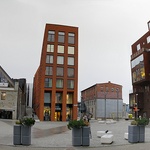
Uģis Bratuškins
professor at Riga Technical University
I'm concerned about the compatibility of the principles of protection of historical urban landscape with the requirements of contemporary, dynamic, multi-functional and diverse environment. One of the risks of decay of historical cities is their inability to flexibly adapt to contemporary needs. Historical urban buildings that cannot fully satisfy the interests of everyday users lose their attractiveness from the perspective of serving as a place of residence or work. The alternative – focusing on guests and tourists – threatens with changes in identity.
Uģis Šēnbergs
Architect
Near Kazan the Volga is approximately the same width as our Daugava is near Riga. But unlike Riga, the capital of Tatarstan is situated on hills with houses on top of them like on pedestals, which gives them a monumental look. Kazan is a city of changing contexts, and every part of the city has its distinctive character. There are many modern buildings in the historical centre that would not look out of place in any metropolis of the world. Houses built for the middle class and even buildings constructed within social programmes are on a good level. In my opinion, the overall image is somewhat spoiled by the abundance of super-expensive office buildings shaped like glass boxes, which are copied from typical Western models. Seemingly, everything is fine – the shining surfaces reflect big money – but a question arises: what does it have to do with Kazan? How is this office centre different from the ones in London, Paris or New York? I'm sure that Kazan can develop a unique regional style based on local architecture traditions and mythology as well as Tatar ornaments. Maybe exactly the creative use of local ornaments will become the key feature of Tatarstan architecture.
Velta Holcmane
publisher
Limit the desire of businessmen to gain quick profit, their hastiness and lack of long-term perspective of the site, eliminate politicians' indecision, observe architects' and planners' ethical principles, ability to yield in front of outstanding values.
Victor Dan Kisilewicz
Ministry of Culture Romania
The topic is a challenge and the answers are based on different cultural level of understanding what it means "architecture" (not only the volumes under the sun.....) The balance between conservation and new insertion inside in urban area it is fore me hard to explain to the new attenders who's life is in virtual space. Maybe this change of ides proposed by Latvian organizer will give me a drop of wise that it could be useful for my daily work as architecture conservator encouraging in the same time the new architecture to rise works as expression of contemporaneity life.
Zane Vāgnere
Ministry of Culture
Looking at the cultural heritage through the lens of the 21st century, we will be amazed by the spectrum of the kaleidoscope that we will be able to see.
Zora Turancova
Ministry of Culture of the Slovak Republic
We should not forget about the relation between cultural heritage and human rights. The States are responsible for the implementation of the international conventions, which has always emphasized human rights in relation to cultural heritage.





























